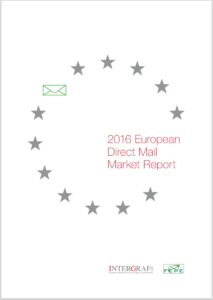Direct mail matters
It used to be that we had little communication online, while our physical letterboxes were packed – not just with valuable mail but also with piles of untargeted ‘junk’ mail. Now the junk mail is filling up our email inboxes and our letter boxes are getting emptier.
That’s good for direct mail! It means that creative, interesting-looking, personalised mail stands out more than ever. It’s more likely than ever before to be opened and to engage the recipient’s attention.
Benefits of direct mail
Highly effective and visible in a cluttered digital world
- Direct mail letters are read by up to 84% of the recipients.
- Recipients often take time to relax while reading it, giving it their full attention. With less distractions, compared to reading online, the reader becomes immersed and the publication or leaflet is read more deeply – a process that leads to ‘deep thinking’ and an increase in effectiveness of the content.
- Research on the effectiveness of physical and online communication strongly suggests that greater emotional processing is facilitated by the physical material than by the virtual. The “real” experience that the physical media provides means it’s better at becoming part of memory. It generates more emotion, helping to develop more positive brand associations.
- New technologies have increased the appeal of direct mail (online media are 60% more effective when combined with physical mail).
- 44% purchased an item online after having received a direct mail from their e-retailer.
- Including a direct mail element in a multimedia campaign increases ROI by 12%.
Tailormade for impact
- Direct mail can be tailormade to be relevant for the individual customer. Digital printing technologies make personalisation even easier. Different paper qualities and colours can be used to make a mailing very appealing and to engage with the recipient’s sense of touch or smell.
- New techniques and printing technologies have made it possible to enhance visual and sensory paper communication through 3D imaging, lenticular stamps, “scratch-and-sniff” applications, die-cutting, etc., as well as the use of papers with specific qualities and textures.
- This digital integration offers marketers opportunities to engage with their customers in exciting ways, such as adding QR codes, augmented reality or video-in-print (a video screen embedded into the printed pages or binding of a printed document).
Importance of the envelope in direct mail
Yes, of course the first task of the envelope is to carry the contents to the recipient. But it can do so much more.
First impressions count! The envelope is the first thing that the customer sees – it is the “entrance ticket”, or the “headline” of direct mail. That’s why savvy marketers spend as much as 50 per cent of their time on the envelope, when creating a direct mail package.
The envelope is a valuable part of the message itself. It incites the recipient’s curiosity and expectations towards the content and it delivers a first marketing message.
An international survey of 3000 consumers comparing preferences for and efficiency of marketing channels confirmed that the printed envelope is the most successful mailing technique. It has not only the highest opening and reading rates (85%), it also beats its electronic and other physical competitors in terms of recall and recognition (67%, email 11%).
Resources
Advantages of printed mail advertising, used in synergy with digital communication.
Excerpt from FEPE Quarterly 1, Spring 2021
Report: 2016 European Direct Mail Market Report was published in 2016 in collaboration with INTERGRAF (the European Federation for Print and Digital Communication). The report provided a strategic and economic approach for European direct mail printers.


